
MENUMENU
TALK TO AN EXPERT
Special Hours: 7AM – 6PM PST
TALK TO AN EXPERT
Special Hours: 7AM – 6PM PST
Are you setting up your marine electrical system? If so, you’ve probably heard of a marine battery switch. Marine battery switches typically look like a big red switch near your electrical controls. They usually connect to the heart of your electrical system. But what does a marine battery switch do? And is it absolutely essential to have one?
In this article, we answer these questions and more as we dive into everything you need to know about your marine battery switch.
A marine battery switch can serve several important functions depending on the type you have. Some marine battery switches simply disconnect your batteries from the rest of the electrical system. This can prevent your batteries from draining via small power sources like your radio, carbon monoxide detector, etc.
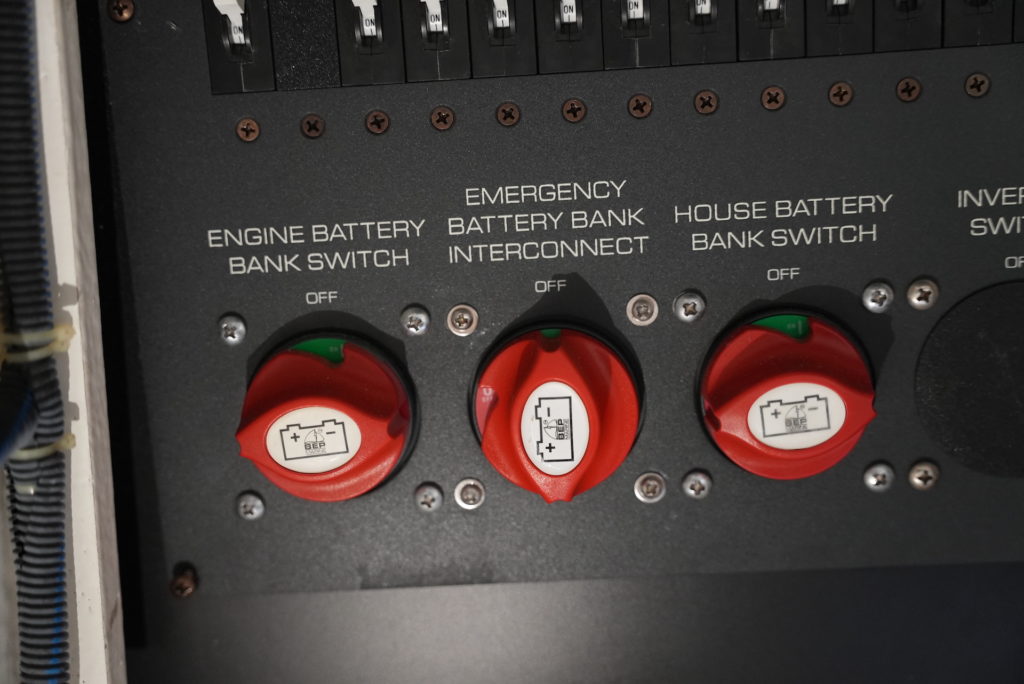
Other battery switches select which battery you can use at one time. You can either switch it to the start battery (the battery you use to start your engine) or your house batteries (the batteries that run your lights, outlets, TV, and any other electronics you use regularly). These battery selector switches can usually also disconnect the battery power, so they’re really multi-purpose switches.
Need a refresher? No problem. Check out our Guide To Marine Electrical Systems.
Battery switches or “master disconnect” switches are a common item in marine systems. These battery switches are used to cut all power from a battery bank and connected loads.
These devices are very versatile and can be used in any circuit when performing maintenance or an emergency shut down. Very often you will see the placement of these switches between inverter(s) and a bank of batteries.
Below are some of the most common styles:
Single On/Off – Shop Here.

3 Position – used to shut off or switch from one bank of batteries to a second.
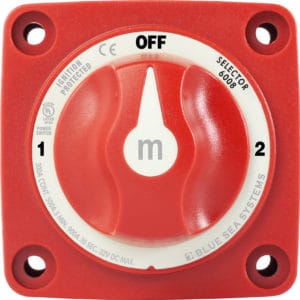
4 Position – used to shut off, switch from one bank to a second, or combine the two.
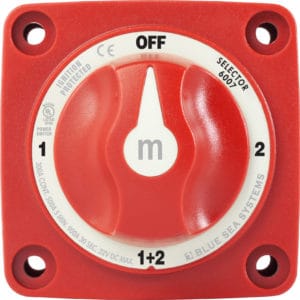
For the purposes of this article, let’s discuss one of the most common battery switches you’ll see on the market: the 4 Position, or “1, 2, 1+2, Off” switch. Sometimes called the 1+2 or an “ALL” switch.
If you have this switch, you probably have two or more battery banks (usually a house bank and an engine bank). When the switch points at “1,” the power draw connects to that specific battery bank. While it’s common for “1” to connect to the starting battery, every boat is different depending on its wiring. Thus, when the battery switch points at “1,” you’re using power from just one battery bank.
When the marine battery switch points at “2,” you’re drawing power from the other battery bank. Again, most electricians wire “2” to the house battery bank, but there’s no way to know for sure without labels. You can also investigate the wiring yourself. If you’re using “1+2” or “ALL,” you’re drawing battery power from both battery banks simultaneously. Also, both of your battery banks connect to one another. While this may seem like the optimal choice, it comes with its disadvantages.
Lastly, “Off” is pretty self-explanatory. It means that your alternator isn’t charging your batteries and that you can’t draw power from your batteries. Nevertheless, your batteries will charge either way if you’re connected to shore power. Now, let’s take a look at when to use these settings.
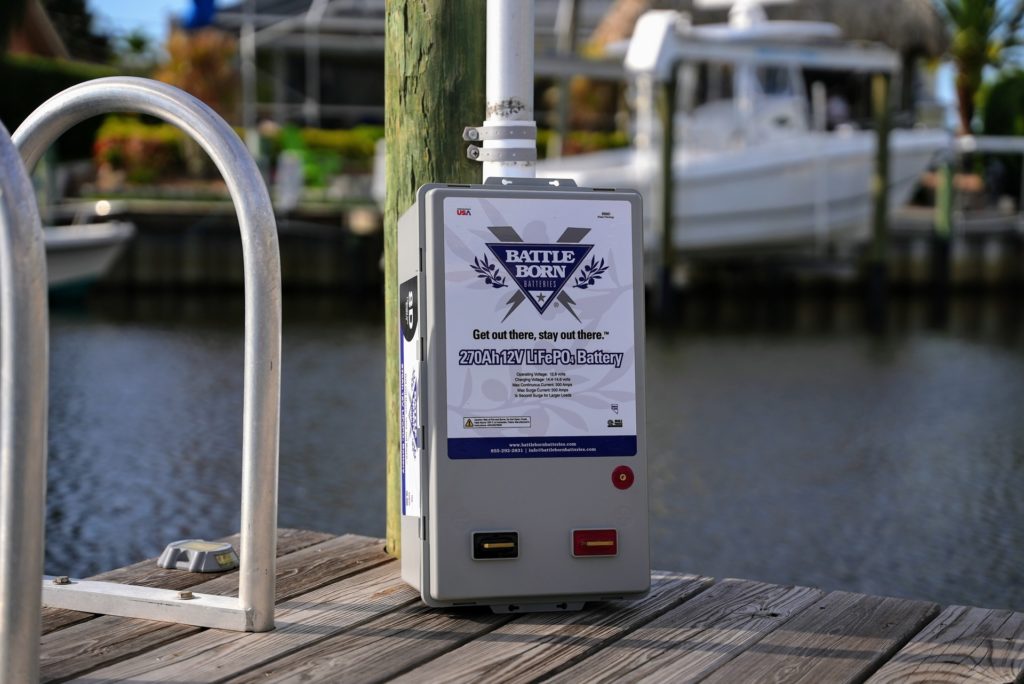
Having a marine battery switch on your boat allows you to control your electricity usage, especially when it comes to your battery storage. For example, if you plan on leaving your boat for a long time, you’ll probably want to switch your battery switch to “Off.” As we mentioned before, small electricity drains can slowly deplete your batteries. After several months of sitting, you may return to find your batteries completely dead.
→ Can You Leave Your Marine Batteries In Your Boat Over Winter? Read our article for proper storage techniques.
Marine battery switches are also crucial for shutting down power for safely performing any sort of boat electrical upgrades or repairs. The risk of shorting out or shock is greatly reduced when you can know for sure power isn’t flowing through wires or cables.
Moreover, selecting your battery switch to draw power from a specific battery bank can help preserve the other battery bank. For instance, if you choose “2” and only draw power from your house batteries, you’ll have peace of mind knowing that you have plenty of energy storage in your starting battery. Thus, if you find your house batteries depleted, you can change your battery switch to “1+2” or “ALL” and use your starter battery power in an emergency, and vice versa.
This brings us to our final point: Beware of using “1+2” or “ALL” for long periods. This means that both of your battery banks are draining. You don’t want to be in the middle of the ocean with no way to start your engine!
Not all boats have marine battery switches, but almost all boaters could benefit from one. Because boats have so many electrical components (trolling motors, fish finders, radios, etc.), many have multiple battery banks regardless of whether they’re a “house” boat.
Marine battery switches allow you to choose which battery bank you’re depleting at one time. They allow you to transfer batteries if you completely drain a certain bank. Thus, if your boat doesn’t already have a marine battery switch, you may want to consider installing one.
→ Have you completely drained your marine batteries before? Here’s how to choose the best marine battery charger for your boat.
You can install your marine battery switch almost anywhere you want. You’ll want it to be out of the way of your typical operations but accessible at the same time. Some boaters like to mount the switch on their center console. Some mount theirs into the side or back bulkhead, so it’s easily accessible on deck.
Meanwhile, some even have their switch in the bilge. There are pros and cons to every location. You’ll have to decide based on your boating style and available space.
In general, keeping the switch close to the batteries is preferable, however.
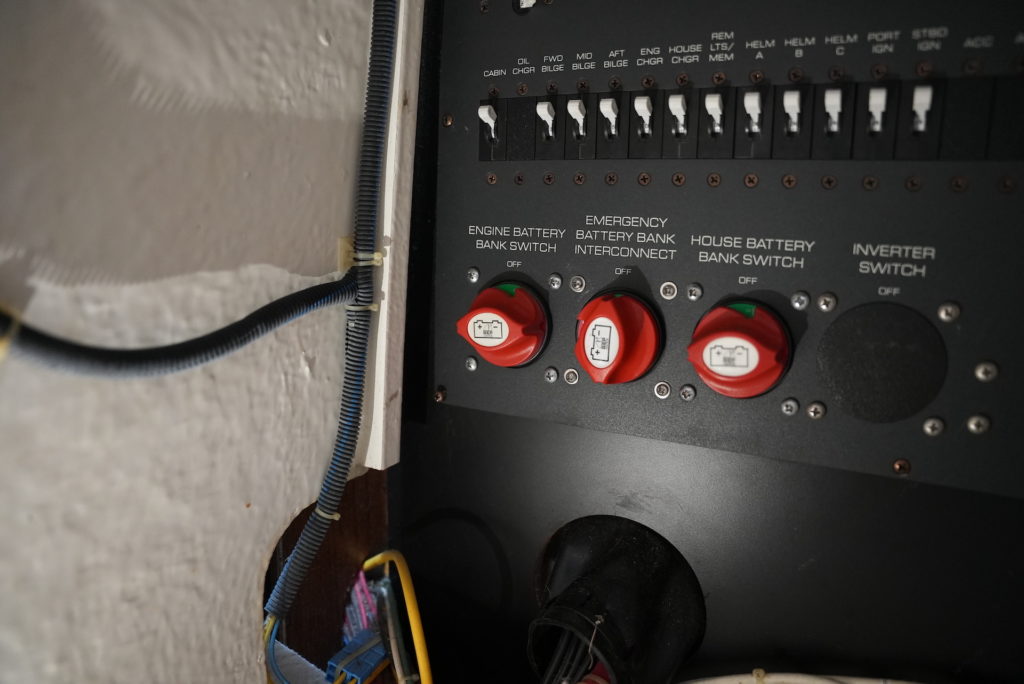
Marine battery switches are extremely useful, especially when you have two or more battery banks on your boat. They conserve battery power, charge your batteries from multiple sources, and offer peace of mind. You’ll know that your batteries have a full charge when you return to your boat from a months-long hiatus.
Unfortunately, not all boats come with a marine battery switch, leaving boaters to research and install their own. Luckily, marine battery switches have become much more popular in recent years, and there’s more and more information on their benefits, uses, and where you should install yours.
Did your boat come with a marine battery switch?
We know that building or upgrading an electrical system can be overwhelming, so we’re here to help. Our Reno, Nevada-based sales and customer service team is standing by at (855) 292-2831 to take your questions!
Also, join us on Facebook, Instagram, and YouTube to learn more about how lithium battery systems can power your lifestyle, see how others have built their systems, and gain the confidence to get out there and stay out there.
Shop Best Sellers

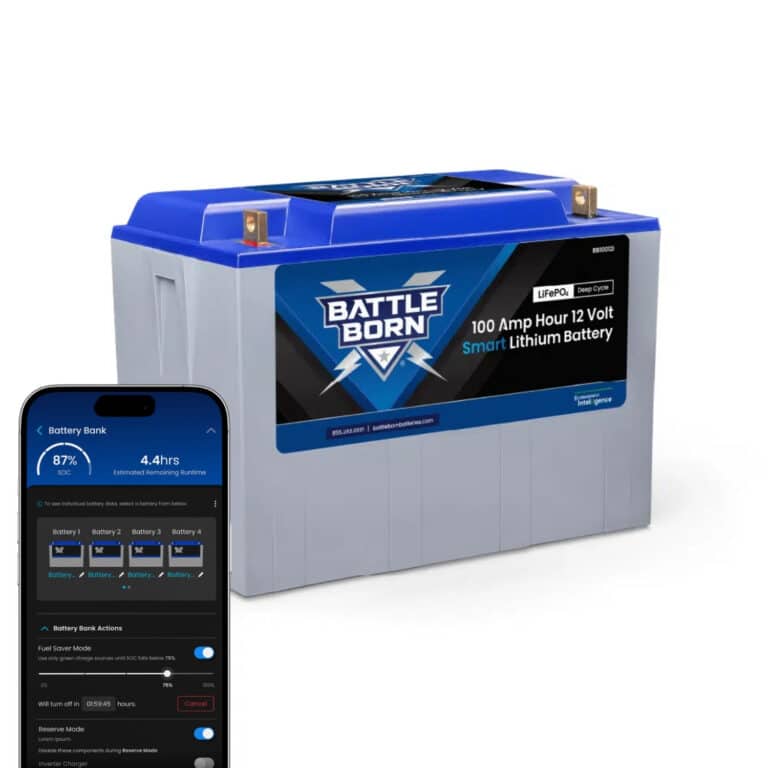

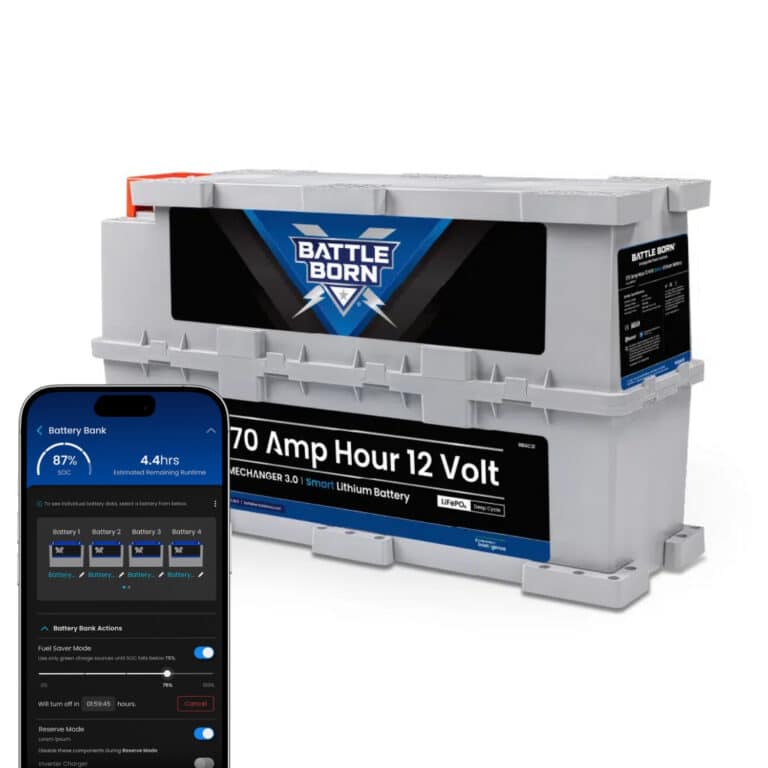




Ask a technical specialist now at 855.292.2831
Stay in the Know
One thought on “Do I Need a Marine Battery Switch on My Boat?”
Great insights on the importance of a marine battery switch! I never considered how it could enhance safety and prolong battery life. Definitely going to look into adding one to my boat setup. Thanks for the tips!